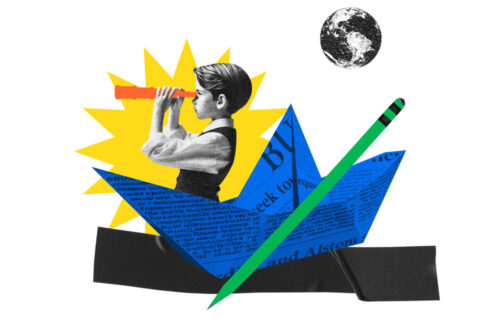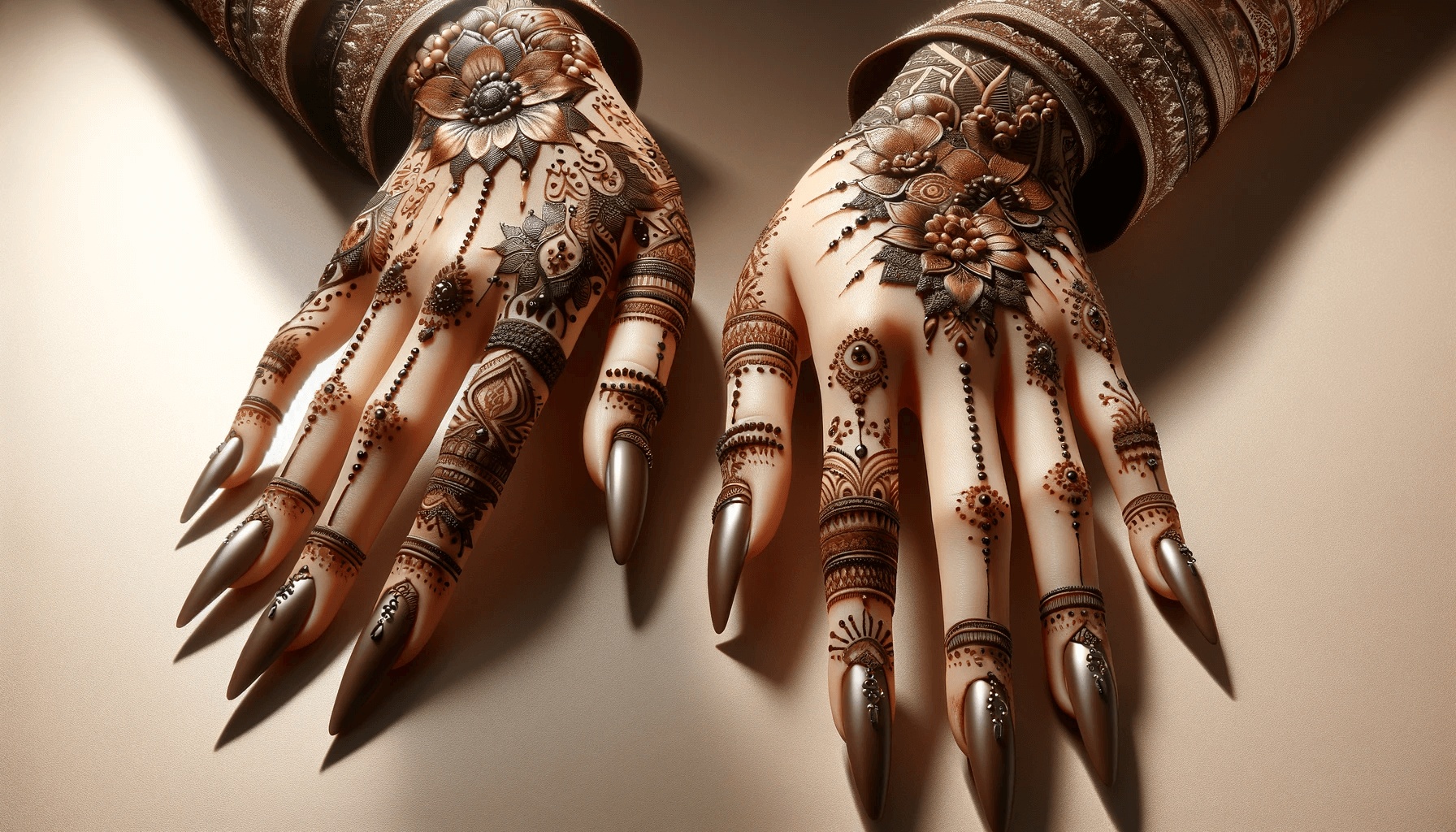Welcome to the world of design where collaboration meets creativity and your friends become your design partners. Say goodbye to the days of solo design projects and hello to a vibrant and collaborative design community. With Design with Friends, you can now unleash your imagination and bring your design ideas to life – together!
Design with Friends is more than just an app. It’s a revolution in the way we design, connect, and inspire. Imagine designing your baby’s nursery in stunning 3D, with the added bonus of collaborating with your friends and the vibrant design community. Share your ideas, get feedback, and receive valuable input from people who truly understand your vision.
At the helm of Design with Friends are visionaries like CEO Nir Sadger, CTO Tomer Kruvi, and Head of Interior Design Hila Shavit. Together, they have created a platform that makes design simple, social, and accessible to everyone. Their mission? To empower designers and design enthusiasts to collaborate effortlessly and unlock their full creative potential.
So why design alone when you can design with friends? Join the design revolution and become a part of the collaborative design movement. Together, let’s create spaces that inspire, delight, and reflect our unique personalities.
The Importance of Collaborative Design in the Workplace
Collaborative design is the secret sauce that brings innovation and success to any workplace. By fostering graphic design collaboration, online design collaboration, and team design projects, organizations can tap into the collective creativity and expertise of their team members.
Collaborative design is not just about working together; it’s a process that involves iterative development and collaboration between different departments and stakeholders. By leveraging the power of collaboration, companies can address discrepancies faster, stay flexible with requirements, and detect errors early on.
Imagine this: you’re working on a major design project for a client. Without collaboration, you would spend hours bouncing ideas back and forth with your team, struggling to align everyone’s vision. However, by utilizing online design collaboration tools, you can streamline the process, make real-time changes, and gather feedback effortlessly.
One such creative collaboration tool is the innovative platform called “DesignHub.” Designed specifically for team design projects, DesignHub allows designers to work together seamlessly, regardless of their physical location. With features like real-time editing, version control, and project management, DesignHub empowers teams to work collaboratively, accelerating the design process.
“Design is a collaborative art. It involves the collective effort of various minds working towards a common goal. When designers collaborate effectively, magic happens.” – John Smith, Lead Designer at XYZ Creative Studio
Through graphic design collaboration and online design collaboration platforms, designers can overcome the limitations of individual work and harness the power of teamwork. Gone are the days of siloed creativity and isolated design decisions. Collaboration brings fresh perspectives, diverse expertise, and synergistic ideas to the forefront.
The Benefits of Collaborative Design in the Workplace
Creative collaboration tools for teams in design projects offer numerous advantages:
- Accelerated design process: By collaborating online and leveraging real-time editing capabilities, designers can work concurrently, reducing the time spent waiting for feedback and approvals.
- Enhanced creativity: When team members from different disciplines and backgrounds come together, their unique perspectives fuel innovation, leading to creative breakthroughs.
- Improved problem-solving: Collaborative design enables collective problem-solving, as each team member can contribute their expertise and insights, resulting in more comprehensive solutions.
- Increased efficiency: By using collaborative platforms, designers can streamline communication, eliminate redundant work, and ensure everyone is on the same page, reducing the risk of errors and misunderstandings.
When collaboration becomes an integral part of a workplace’s design culture, the possibilities are endless. From brainstorming sessions and design sprints to ongoing feedback loops, collaborative design cultivates an environment where ideas thrive and projects flourish.
Strategies for Effective Collaboration in the Workplace
Collaboration is the cornerstone of successful design projects in the workplace. To ensure seamless teamwork and optimal results, it’s essential to implement effective strategies. Here are some key strategies to enhance collaboration:
1. Build Diverse and Inclusive Teams
When assembling your team, prioritize diversity and inclusivity. By bringing together individuals with different backgrounds, perspectives, and skill sets, you can tap into a wealth of creativity and innovative ideas.
2. Encourage Open Communication
Open communication channels are vital for effective collaboration. Encourage team members to freely express their thoughts, ideas, and concerns. Foster an environment where everyone feels comfortable sharing their opinions and actively listening to others.
3. Set Clear Expectations and Roles
Ambiguity can quickly lead to confusion and hinder collaboration. Clearly define each team member’s responsibilities, goals, and expectations. When everyone understands their role in the project, it becomes easier to work together cohesively.
4. Grant Decision-Making Autonomy
Empower team members by granting them autonomy in decision-making. When individuals feel trusted and have the freedom to make choices, they are more invested in the project and take greater ownership of their work.
5. Cultivate a Forgiving Yet Professional Atmosphere
Mistakes happen, and fostering a forgiving atmosphere allows team members to learn from them without fear of retribution. Encourage a culture of growth, where failures are seen as opportunities for improvement. However, it’s vital to maintain professionalism and hold everyone accountable for their actions.
6. Leverage Professional Collaboration Tools
To streamline workflows and enhance teamwork, utilize professional design collaboration platforms and tools. These platforms provide a centralized space for project management, file sharing, real-time collaboration, and feedback gathering. They enable seamless communication and ensure everyone stays on the same page.
By implementing these strategies, you can foster a collaborative and productive work environment where design projects thrive. Remember, successful collaboration is not just about the tools you use but also about the mindset and practices you cultivate within your team.
| Benefits of Effective Collaboration in the Workplace | Results |
|---|---|
| Improved creativity and innovation | Designs that push boundaries and stand out from the competition |
| Enhanced problem-solving capabilities | Efficient solutions to complex design challenges |
| Increased productivity | More design projects completed within deadlines |
| Enhanced employee satisfaction and engagement | A positive work environment that fosters growth and collaboration |
| Higher quality designs | Meticulously crafted and well-executed design deliverables |
Wrap Up
Effective collaboration is the key to unlocking your team’s creative potential and achieving exceptional design outcomes. By implementing the strategies outlined above and leveraging professional collaboration tools, you can build a collaborative work environment where design projects thrive and your team’s collective talent shines.
Foster Team Collaboration in a Hybrid/Work-From-Home Workplace
In today’s ever-evolving work landscape, fostering team collaboration can be quite a challenge, especially when dealing with hybrid or work-from-home environments. But fear not, for there are ways to create a sense of togetherness and promote effective collaboration, even from a distance.
A key tip for fostering collaboration is to have regular check-ins with your team members. These check-ins can take the form of virtual meetings, video calls, or even quick catch-up sessions over a messaging app. Regular communication ensures that everyone is on the same page, promotes transparency, and helps align efforts towards common goals.
Another effective strategy is to utilize collaboration tools that are specifically designed to facilitate teamwork and streamline project management. Messaging apps like Slack or Microsoft Teams can help create a dynamic and interactive work environment, where team members can share files, ask questions, and offer support in real-time.
Project management software such as Trello or Asana can also be invaluable for visualizing workflows, assigning tasks, and tracking progress. These tools provide a centralized platform where team members can collaborate, share updates, and keep track of deadlines, making remote collaboration more efficient and organized.
To foster a sense of camaraderie and promote informal interactions, it’s important to encourage virtual watercooler moments. Create dedicated chat channels or virtual spaces where team members can share non-work-related topics, engage in light-hearted conversations, and even celebrate milestones or personal achievements. These informal interactions contribute to building a stronger sense of connection and teamwork.
Lastly, it’s crucial to establish clear expectations when it comes to collaboration in a hybrid or work-from-home setup. Clearly defining roles, responsibilities, and deadlines ensures that everyone understands their contribution to the team and is accountable for their tasks. This clarity fosters trust, minimizes misunderstandings, and promotes collaboration.
In conclusion, while working in a hybrid or work-from-home workplace may pose challenges for team collaboration, adopting a proactive approach and leveraging the right tools can make all the difference. Regular check-ins, collaboration tools, informal interactions, and clear expectations ensure that remote teams can collaborate effectively and continue to produce outstanding work.
Leveraging Real-time Collaboration Tools
In today’s fast-paced work environment, effective collaboration is crucial for successful design projects. By utilizing real-time collaboration tools, you can streamline communication, enhance creativity, and ensure everyone stays connected and on the same page. Let’s explore some top-notch tools that will take your design collaboration to the next level.
1. Wondershare EdrawMind
Wondershare EdrawMind is a powerful design collaboration platform that offers real-time editing and brainstorming capabilities. It allows you to create mind maps, flowcharts, and diagrams while collaborating with your team in real-time. With its intuitive interface and extensive features, you can effectively communicate your design ideas and collaborate seamlessly.
2. Google Docs
Google Docs is a popular design collaboration tool that enables multiple users to edit a document simultaneously. You can create and share documents, presentations, and spreadsheets with your team, making it easy to collaborate and provide feedback in real-time. Plus, Google Docs automatically saves changes, ensuring no valuable input is lost.
3. Google Meet
Communication is an essential aspect of design collaboration, and Google Meet is a reliable video conferencing tool that enables seamless communication and collaboration among team members. With its high-quality audio and video capabilities, you can conduct virtual meetings, share screens, and discuss design concepts in real-time.
Now let’s take a closer look at how these real-time collaboration tools compare in terms of their key features:
| Tool | Key Features |
|---|---|
| Wondershare EdrawMind |
|
| Google Docs |
|
| Google Meet |
|
With these comprehensive real-time collaboration tools at your disposal, you can effortlessly connect with your team, share ideas, and iterate on design concepts together. So, enhance your social design collaboration and bring your design projects to life!
Conclusion
Collaboration is the key to unlocking the full potential of your design projects. Whether you’re working on designing a nursery with friends or collaborating in a professional environment, fostering a collaborative atmosphere and utilizing the right tools can greatly enhance creativity, productivity, and overall success.
By embracing diversity and encouraging open communication, you create an environment where different perspectives and ideas can thrive. This leads to innovative and unique design solutions that stand out from the crowd.
To facilitate collaboration, it’s crucial to leverage real-time design collaboration tools. These platforms provide a seamless and efficient way for you and your team to work together, allowing for simultaneous editing, feedback exchange, and live interactions. Tools like Design with Friends serve as a perfect example of such a design collaboration platform.
So, whether you’re designing with friends or collaborating with colleagues, make sure to prioritize collaboration and utilize the right design collaboration tools. By doing so, you’ll tap into the power of collective creativity and create designs that truly make a difference.
FAQ
What is Design with Friends?
Design with Friends is a free online app that allows you to design your nursery in collaboration with friends and the design community. It offers a 3D design platform where you can furnish, decorate, and seek feedback on your baby’s nursery.
Who are the team behind Design with Friends?
The team behind Design with Friends includes CEO Nir Sadger, CTO Tomer Kruvi, and Head of Interior Design Hila Shavit.
What is collaborative design?
Collaborative design is a process that involves iterative development and collaboration between different departments and stakeholders. It offers advantages such as addressing discrepancies faster, staying flexible with requirements, and detecting errors early on.
How can creative collaboration tools benefit teams?
Creative collaboration tools for teams can make the design process faster and more efficient. They streamline workflows, enhance teamwork, and enable real-time editing and document collaboration.
What are the strategies for effective collaboration in the workplace?
Strategies for effective collaboration in the workplace include building diverse and inclusive teams, encouraging open communication, setting clear expectations and roles, granting decision-making autonomy, and leveraging professional collaboration tools.
How can team collaboration be fostered in a hybrid/work-from-home workplace?
Tips for fostering collaboration in a hybrid or work-from-home workplace include regular check-ins, utilizing collaboration tools like messaging apps and project management software, encouraging informal interactions, and establishing clear expectations.
How can real-time collaboration tools enhance teamwork?
Real-time collaboration tools like Wondershare EdrawMind, Google Docs, and Google Meet can greatly enhance teamwork by allowing for real-time editing, document collaboration, and video conferencing. They facilitate better communication and keep everyone connected and working together.
Why is collaboration key to successful design projects?
Collaboration is key to successful design projects as it fosters a collaborative environment, encourages diverse perspectives, and brings together different skill sets to enhance creativity, productivity, and overall project success.



